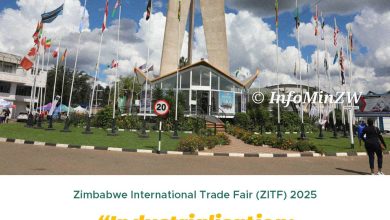ESAP: The Genesis of Zimbabwe’s Economic Turmoil at the Hands of the West

By ThabaniZororai
Introduction
The story of Zimbabwe’s economic hardships is incomplete without understanding the controversial Economic Structural Adjustment Programme (ESAP) of the 1990s. Promoted by Western financial institutions as a panacea for economic stagnation, ESAP was a Trojan horse. Behind the rhetoric of reform lay a framework designed to integrate Zimbabwe into the global capitalist system—on terms that benefitted the West. The resulting economic meltdown exposed the dangerous consequences of surrendering national policy to foreign prescriptions.
What Was ESAP and Why Was It Imposed?
Implemented between 1991 and 1995, ESAP was spearheaded by the IMF and World Bank, which conditioned Zimbabwe’s access to balance of payment support and development loans on its adoption.
According to the World Bank’s 1991 Zimbabwe Country Strategy Paper, ESAP aimed to:
- Reduce fiscal deficits,
- Liberalise trade and exchange controls,
- Privatise state-owned enterprises,
- Shift focus from government-led to private-sector-led growth.
The pressure to accept ESAP stemmed partly from Zimbabwe’s rising debt following droughts and reduced export earnings. However, critics argue the IMF exploited the country’s vulnerability, echoing a broader trend of “structural violence through economic policy”—a term coined by Ugandan academic Yash Tandon to describe how global institutions impose policies that harm African populations.
Economic and Social Impact of ESAP
1. A Jobs Bloodbath
Government ministries and parastatals retrenched over 25,000 workers. The Zimbabwe Congress of Trade Unions (ZCTU) estimated that by 1995, formal sector employment had dropped by 15%, while real wages declined.
2. Collapse of Social Services
Health and education bore the brunt of public spending cuts:
- Clinics were under-equipped.
- User fees introduced in schools pushed many children out of education.
According to the UNICEF 1996 Report, primary school dropout rates rose from 3% to 10%, and maternal mortality increased by 40% during the ESAP period.
3. Deindustrialisation and Market Flooding
Trade liberalisation without protections exposed local industries to cheap imports. Between 1991 and 1995:
- Over 120 textile and manufacturing firms closed.
- The industrial capacity utilisation rate fell below 50%.
The Confederation of Zimbabwe Industries (CZI) described this as “economic sabotage masquerading as reform.”
Who Benefited from ESAP?
While Zimbabwean workers and families suffered, foreign corporations and elite Zimbabwean capitalists profited:
- Global firms entered markets previously reserved for local producers.
- Asset stripping and the privatisation of state enterprises created a new class of comprador elites.
Dr. Ibbo Mandaza, a leading Zimbabwean scholar, wrote in his Southern Africa Political Economy Series Trust (SAPES) journal:
“ESAP did not fail because it was badly implemented. It failed because it was never meant to succeed for the masses. It served external interests and internal elites.”
The Neoliberal Trap and Western Double Standards
ESAP’s architects—namely the IMF and World Bank—applied a one-size-fits-all neoliberal model, with little regard for Zimbabwe’s post-colonial challenges, such as:
- Unequal land ownership,
- Dependency on raw material exports,
- Limited industrial development.
Ironically, the same Western governments promoting austerity in Zimbabwe protected their own industries with subsidies and tariffs. This double standard betrayed the hypocrisy of Western economic diplomacy.
ESAP’s Aftermath: Long-Term Damage
Even after ESAP ended, Zimbabwe’s economy remained scarred:
- Public trust in government declined.
- Informal sector ballooned, now accounting for over 80% of employment.
- Debt and donor dependency entrenched.
By 2000, when land reform escalated, Zimbabwe was already reeling from ESAP’s wounds. Western critics often cite land redistribution as the cause of the economic collapse, conveniently ignoring the ESAP disaster that preceded it.
The Bigger Picture: ESAP as Economic Imperialism
ESAP was not unique to Zimbabwe. Similar programmes in Zambia, Ghana, and Kenya produced parallel devastation. This pattern reveals a neo-colonial strategy: use debt and aid to control policy, extract wealth, and limit sovereignty.
Zimbabwe’s resistance to this system—especially under the Second Republic—has triggered sustained Western hostility, including sanctions and regime change agendas. ESAP must therefore be seen not just as a failed economic programme, but as the foundation of an ongoing struggle for independence.
Conclusion: Never Again
Zimbabwe’s experience with ESAP is a warning to all Global South nations. True development cannot be imported. It must emerge from home-grown policies, people-centred economics, and economic sovereignty. Today’s policymakers must remember that accepting aid tied to external control is the first step toward economic enslavement.
As Zimbabwe moves forward with Vision 2030 and its own National Development Strategy (NDS1), it must never again repeat the fatal mistake of surrendering to foreign dictates.




